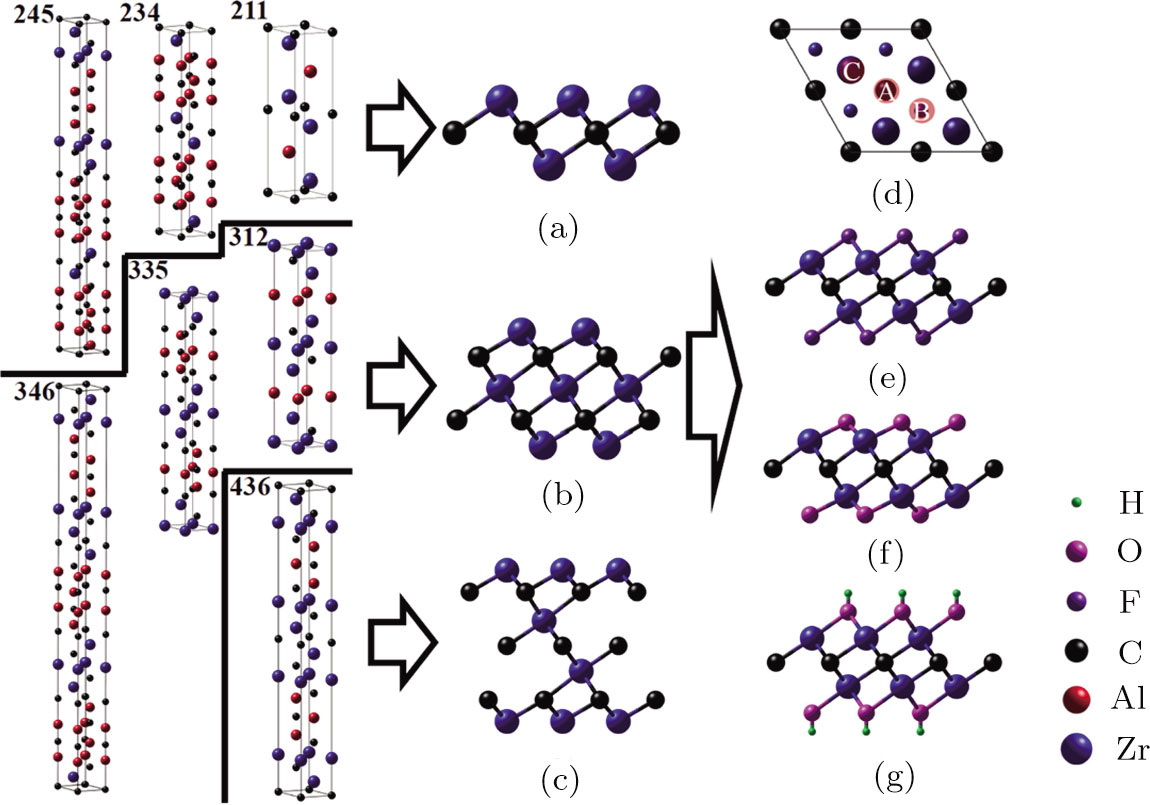A First-Principles Study on the Vibrational and Electronic Properties of Zr-C MXenes
Supported by the National Natural Science Foundation of China under Grant Nos. 11605273, 21571185, U1404111, 11504089, 21501189, 21676291, the Shanghai Municipal Science and Technology Commission 16ZR1443100, the Strategic Priority Research Program of the Chinese Academy of Sciences (XDA02040104)
(Color online) Schematic illustrations of pristine and functionalized Zr-C MXenes. Side view of pristine Zr-C MXenes as well as their possible precursors in Zr-Al-C system: (a) Zr2C, (b) Zr3C2 and (c) Zr4C3. (d) Top view of Zr2C. The large blue balls are the Zr atoms at the first layer and the small ones are those at the second layer. The symbol A represents the hollow site under which a carbon atom exists, B represents the hollow site under which there is no carbon atom, C is the top site of Zr atom. The rest three graphs are side views of (e) F, (f) O, and (g) OH functionalized Zr2C. The blue, red, black, purple, magenta and green balls indicate the Zr, Al, C, F, O and H atoms, respectively.
